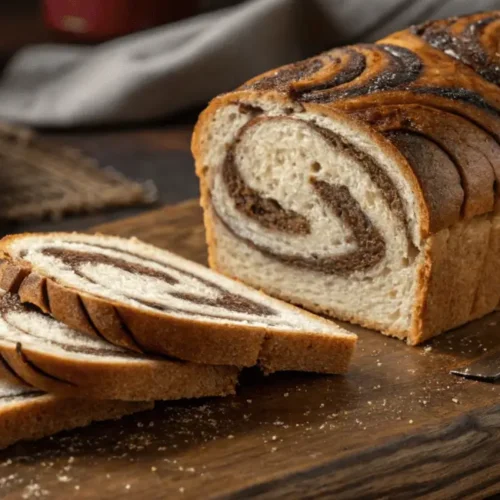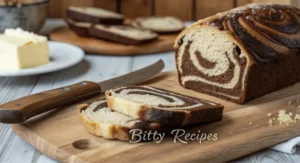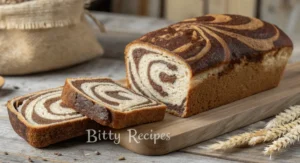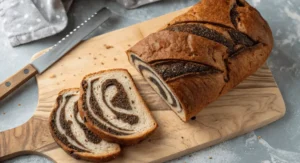
How to Make Marble Rye Bread at Home: Full Guide
Uncover the history and baking process behind marble rye bread and why it makes the perfect base for a Reuben sandwich.
Equipment
- Two large mixing bowls
- Stand mixer (optional, but helpful)
- Dough scraper
- Clean kitchen towel
- Baking sheet
- Parchment paper
- Sharp knife or bread lame
- Spray bottle with water
Ingredients
- Light Rye Dough:
- 3 cups 360g bread flour
- 1 cup 120g rye flour
- 1 ½ cups 360ml warm water (105-115°F / 40-46°C)
- 2 ¼ teaspoons 7g active dry yeast (one packet)
- 1 ½ teaspoons 9g salt
- 1 tablespoon caraway seeds optional, but highly recommended!
- Dark Rye Dough:
- 2 ½ cups 300g bread flour
- 1 ½ cups 180g rye flour
- 1 ½ cups 360ml warm water (105-115°F / 40-46°C)
- 2 ¼ teaspoons 7g active dry yeast (one packet)
- 1 ½ teaspoons 9g salt
- 2 tablespoons unsweetened cocoa powder
- 2 tablespoons molasses
- 1 tablespoon caraway seeds optional
Instructions
- Light Dough: Combine light dough ingredients (bread flour, rye flour, warm water, yeast, salt, optional caraway) in a large bowl. Knead with a stand mixer (8-10 min) or by hand (10-12 min) until smooth and elastic.
- Dark Dough: Repeat the process with the dark dough ingredients (including cocoa powder and molasses). Knead until smooth and elastic.

- First Rise: Put each ball of dough in a bowl that has a little oil and cover it. Let it sit in a warm spot for 1 to 1.5 hours, or until it gets twice as big.
- Divide & Shape: Punch down both doughs. Divide each into two equal pieces (four pieces total).
- Create Swirls: Roll out one light and one dark piece into 12x8 inch rectangles. Place dark dough on top of light dough. Roll tightly from the short end, like a jelly roll. Repeat with the remaining dough pieces.
- Combine & Twist: Place the two swirled logs side-by-side. Press them together gently. Twist the logs together, fold in half, and pinch the ends to form a loaf.

- Second Rise: Place the shaped bread on a baking sheet lined with parchment paper. Loosely cover it with either a cloth or plastic wrap. Allow it to proof for 45 to 60 minutes, and it should be nearly double in size.
- Preheat & Score: Preheat oven to 400°F (200°C) with a baking stone or empty cast-iron skillet inside. Make a few shallow cuts on the top of the loaf using a sharp knife.
- Bake: Place the baking sheet in the oven, Spritz the loaf with water. Bake for 35-45 minutes, until golden brown and hollow-sounding when tapped.
- Cool: Allow the item to cool completely on a wire rack before slicing.

Notes
Respect the Dough's Needs (Gluten, Yeast, and Time): This bread's success hinges on carefully balancing three key elements. First, gluten development requires proper kneading (whether by hand or machine) – don't skimp on this, even though rye dough is stickier. Second, yeast activity is paramount; ensure your yeast is fresh, your water temperature is correct, and you see clear signs of activation (foaminess). Third, time is essential for both the bulk fermentation (first rise) and the proofing (second rise). Don't rush these stages; let the dough double in size, even if it takes longer than the recipe states. Rushing any of these steps will almost certainly result in a dense, flat, or otherwise unsatisfactory loaf. Pay attention to the feel of the dough as much as the clock.